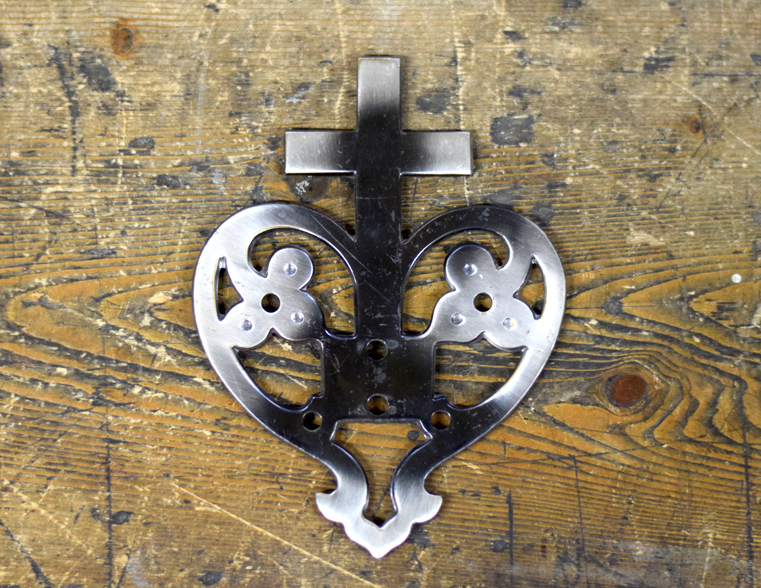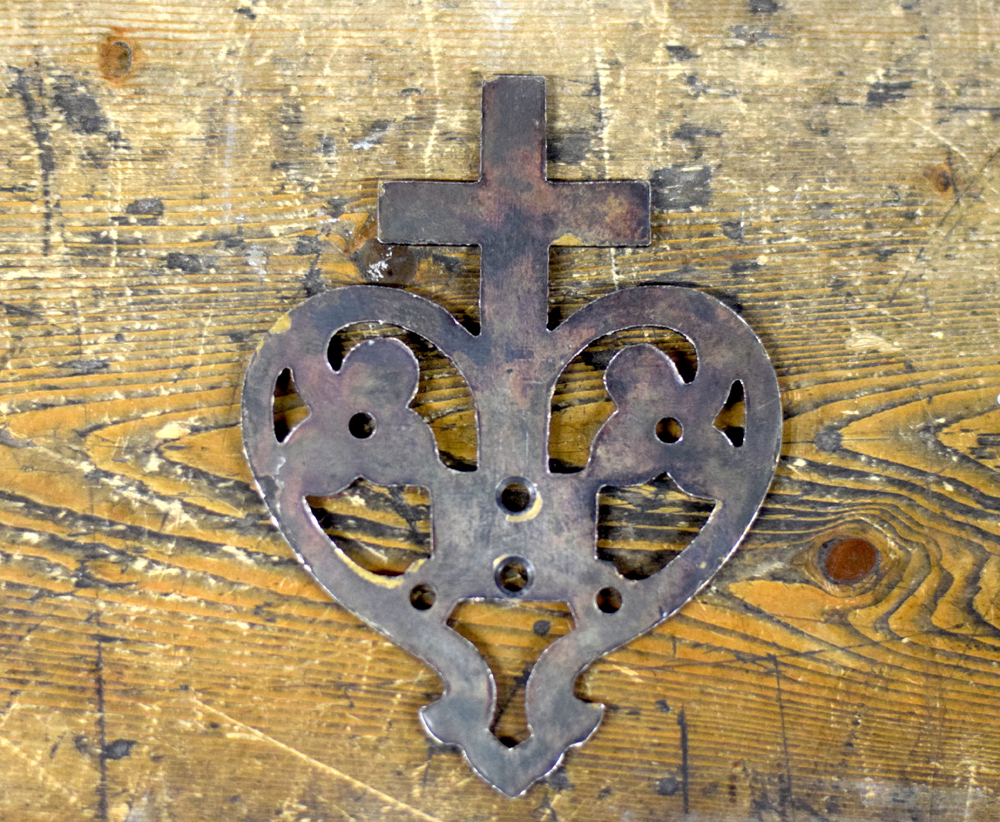

Newman Brothers were known for their variety of finishes. This ring plate has been nickel-plated to achieve the oxi-silver finish we see here.
First the plate is gently heated to allow smooth application of a black lacquer. This lacquered plate is then polished to remove the black lacquer and reveal silvered parts underneath creating this oxi-silver finish as seen here.
The process of producing creating black-lacquer involved dissolving platinum into nitro-hydrochloric acid and then dissolving the crystallised result in spirit of wine, ether, or water. This produces a solution that can be mixed with any of the bronzing powders, such as crocus, sienna or rouge. After applying the lacquer, liquid ammonia could be applied to lighten areas if needed.
This Catholic backplate design was in production at Newman Brothers from the 1920s onwards. Before the 1950s it would have been manufactured using sand casting. This example is die cast, and as such was produced off site as Newman Brothers never had die casting facilities. The finished version had a small Christ-figure ornament mounted on the cross a ring handle. See image below which is taken from Newman Brothers’ 1960s’ catalogue.







